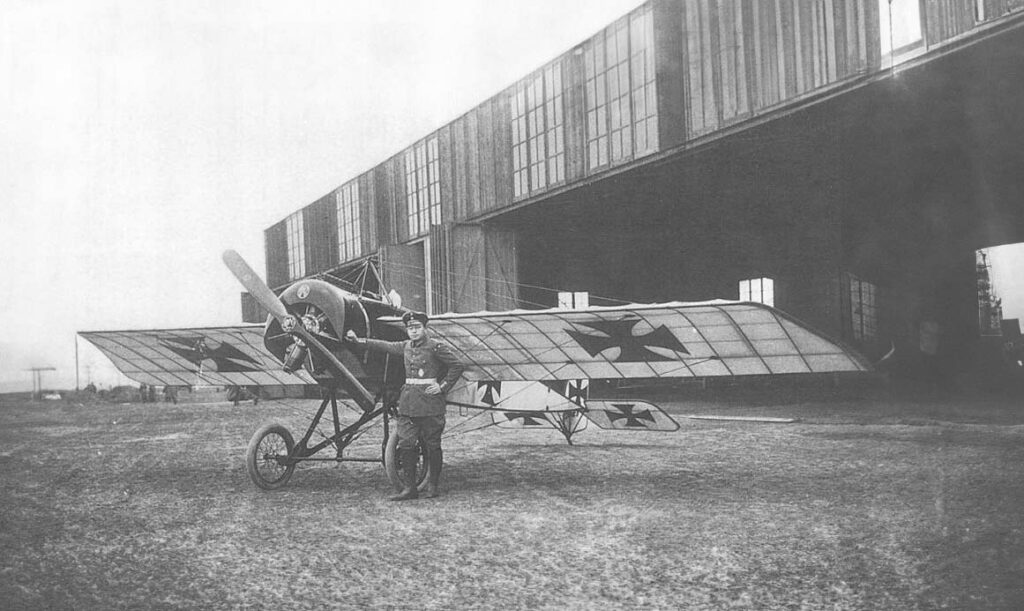Delve into the Pfalz E.I, a 1915 German fighter aircraft, examining its development, design, performance, and combat role in World War I, highlighting its impact in early aviation.
This article provides a comprehensive overview of the Pfalz E.I, a German fighter aircraft developed in 1915. It explores the aircraft’s historical context, design specifications, performance capabilities, military usage, and its overall significance in the early years of aerial combat during World War I. The Pfalz E.I, emerging during a pivotal time in military aviation history, marked a significant progression in the design and utilization of fighter aircraft. Developed in response to the escalating demands of aerial combat in World War I, this aircraft played a notable role in Germany’s aerial warfare strategy.
History of the Development of the Pfalz E.I
The onset of World War I in 1914 brought a swift evolution in military technology, particularly in aviation. Air superiority became a crucial element of warfare, leading to the rapid development of fighter aircraft. The Pfalz E.I was a response to this need, designed to provide the German Imperial Air Service with a competitive edge in the skies.
Developed by Pfalz Flugzeugwerke, a prominent German aircraft manufacturer, the Pfalz E.I was a direct outcome of Germany’s quest to match and surpass the capabilities of Allied aircraft. The development program was spearheaded by the company’s lead engineers, with the maiden flight occurring in mid-1915.

Design of the Pfalz E.I
The Pfalz E.I was a monoplane with a length of 7.2 meters (23 feet 7 inches) and a wingspan of 9.4 meters (30 feet 10 inches). Its design featured a mixed construction of wood and fabric, with a streamlined fuselage and a single open cockpit. It was powered by a rotary engine, a popular choice for fighter aircraft at the time.
One of the aircraft’s significant design aspects was its synchronization gear, which allowed the pilot to fire a machine gun through the propeller without damaging the blades. This feature, however, had its limitations and was prone to mechanical failures. Despite these drawbacks, the Pfalz E.I’s design represented a step forward in integrating weaponry and aircraft performance.
Performance of the Pfalz E.I
Equipped with an Oberursel U.0 rotary engine, the Pfalz E.I delivered about 100 horsepower (75 kW). It achieved a top speed of around 150 km/h (93 mph) and could reach a maximum altitude of 3,500 meters (11,483 feet). Its operational range was limited, suitable primarily for short-range missions.
Compared to contemporaries like the Fokker Eindecker and the British Airco DH.2, the Pfalz E.I offered comparable speed but lagged in maneuverability and reliability. These performance characteristics provided insights into the constraints and possibilities of early fighter aircraft design.
Military Use and Combat of the Pfalz E.I
The Pfalz E.I, armed with a single forward-firing machine gun, saw limited combat use. It participated in various air operations over the Western Front, engaging in reconnaissance and occasional dogfights. Its impact in combat was modest, primarily due to its mechanical limitations and the rapid development of more advanced aircraft by both the Allies and other German manufacturers.
The Pfalz E.I was not extensively exported and remained a relatively obscure model in Germany’s wartime aviation lineup. It was eventually phased out and replaced by more advanced designs like the Albatros series of fighter aircraft.
The Pfalz E.I represents a notable chapter in the history of World War I aviation. While it did not achieve widespread fame or have a significant impact on the war’s aerial battles, its development and deployment provide valuable insights into the early stages of fighter aircraft design and the rapid technological advancements that characterized this era in military aviation.
Back to the Warbirds section.